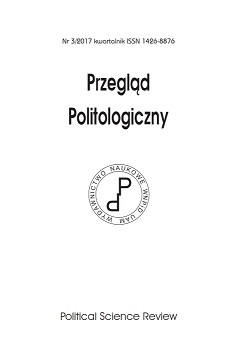Chińska inicjatywa „jeden pas, jedna droga”: wyzwania i wymagania dotyczące jej skutecznego wdrożenia w Azji Środkowej
China’s “One Belt, One Road Initiative”: challenges and requirements for its successful implementation in Central Asia
Author(s): Francisco Gómez MartosSubject(s): Supranational / Global Economy, International relations/trade, Political economy, Economic development, Globalization, Geopolitics
Published by: Uniwersytet Adama Mickiewicza
Keywords: One Belt; One Road Initiative; Silk Road Economic Belt and Central Asia; Asian Infrastructure Investment Bank; Eurasian Economic Community;
Summary/Abstract: Twenty five years after the dissolution of the former Soviet Union and the reemergence of the Central Asian Republics as independent States, this region continues to be the scene of rivalries amongst the big powers (Russia, China, the European Union, USA, India, Japan, Turkey and Iran) competing in a sort of a “new Grand Game” to increase their geopolitical and economic influence in the region. Its geography, diverse and rich natural resources, like oil and gas, explain the ongoing hidden rivalries. Despite its common historical and cultural past, Central Asia constitutes a heterogeneous region with a multiethnic and multi-linguistic composition and a low degree of physical, economic and trade integration. The lack of mutual trust, the persisting tension over borders and the use and sharing of natural resources, as well as different levels of economic performance have so far jeopardized the development of genuine regional cooperation. Against this background, the idea behind the Chinese OBOR Initiative to develop rapid transportation, if well implemented, could theoretically, by improving interregional connectivity, develop the Central Asia regional market and foster intergovernmental cooperation and people-to-people contacts within the region. In this context, could we expect that the ambitious Chinese OBOR Initiative will boost geopolitical stability and promote shared economic and trade benefits in Central Asia? What are the conditions for that need to be fulfilled? The author analyzes in depth certain crucial political, economic and institutional requirements for the successful implementation of the OBOR Strategy and concludes, however, that three years after the launching of this crucial instrument of the Chinese “globalization without democracy” model, its implementation faces major problems and thus raises more doubts than certainties.
Journal: Przegląd Politologiczny
- Issue Year: 2017
- Issue No: 3
- Page Range: 127-138
- Page Count: 12
- Language: English

